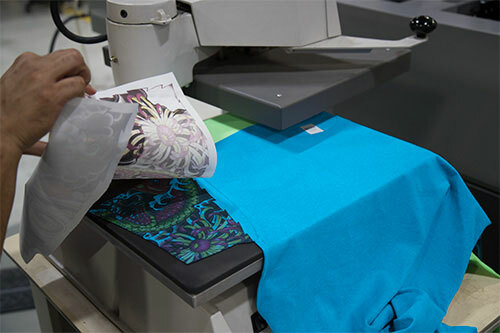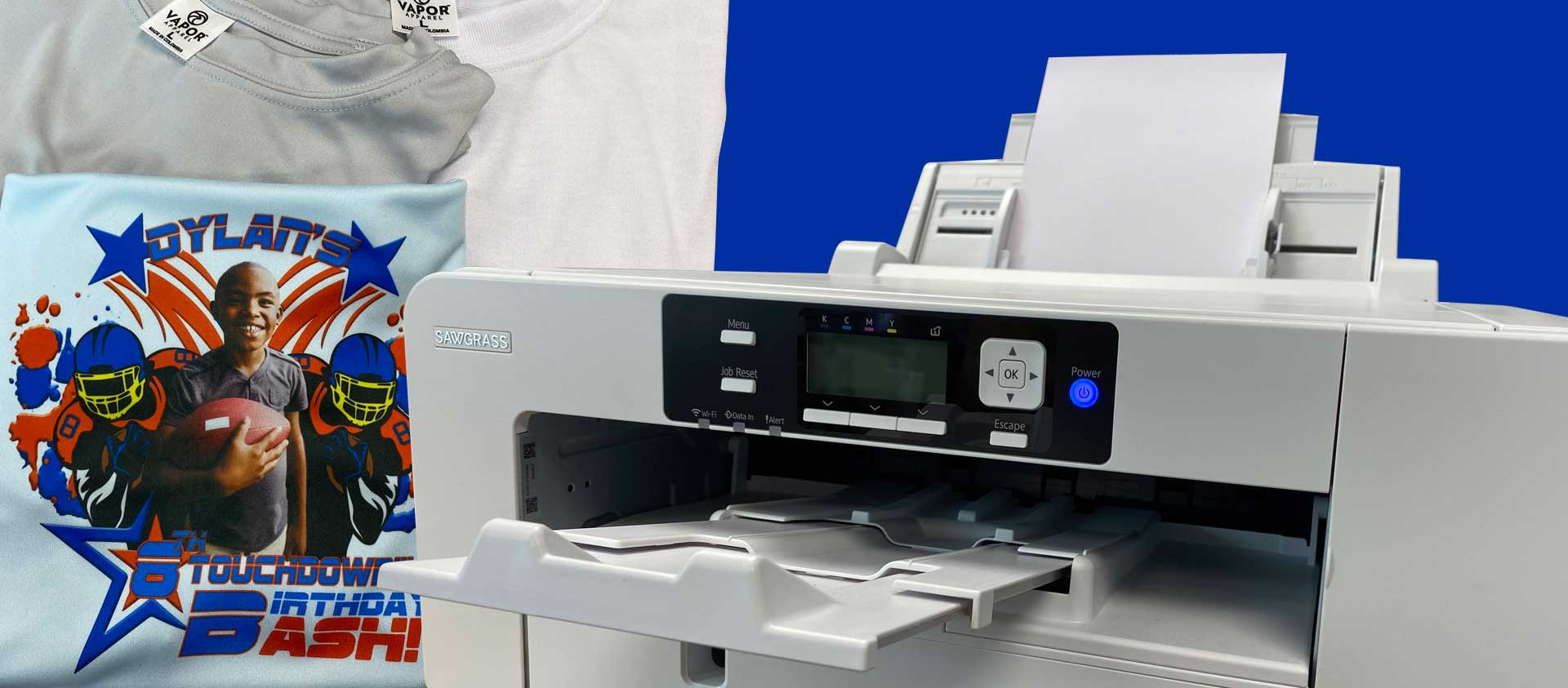Top Fads in Branded Clothing That You Required to Know About
Wiki Article
From Typical to Digital: Recognizing the Evolution of Cloth Printing
The change of fabric printing from conventional techniques like block printing and stand up to dyeing to contemporary techniques such as display and electronic printing marks a considerable change in the textile market. Standard techniques, soaked in artisanal workmanship and social value, have actually progressively offered method to digital developments that offer unmatched precision, performance, and personalization. This change not just boosts production capacities yet also aligns with growing needs for sustainable techniques. Just how do these developments influence the essence of fabric printing, and what might the future hold for this ever-evolving craft?Standard Towel Printing Techniques
In the early phases of fabric manufacturing, typical cloth printing techniques served as the cornerstone of material layout, providing both performance and imaginative expression. Block printing, one of the earliest approaches, entailed sculpting elaborate designs into wood blocks, which were then dipped in color and pushed onto material.Stand up to dyeing, including techniques like batik and tie-dye, utilized wax or various other materials to stop dye from permeating particular areas of the textile. This technique developed striking contrasts and elaborate layouts, frequently imbued with cultural value. Stenciling, another traditional method, included cutting patterns right into a product and using dye with the openings, using an easier yet efficient method to create repeated styles.
These conventional techniques not only shaped the fabric sector's very early advancement but additionally prepared for future technologies. Each strategy showed the cultural and regional qualities of its origin, maintaining and sharing artisanal understanding with generations.
The Rise of Display Printing
The introduction of display printing in the early 20th century noted a significant separation from traditional techniques, offering unmatched versatility and effectiveness. Display printing enabled developers to produce complex patterns and vivid colors on materials, which were previously challenging to accomplish with block printing or hand-painting approaches.One of the crucial benefits of screen printing is its ability to duplicate intricate designs on a big range with remarkable fidelity. This scalability made it exceptionally popular in the commercial textile market, where automation without sacrificing quality is vital. In addition, screen printing accommodates a variety of dyes and inks, increasing the scheme of textures and surfaces readily available to developers.
Additionally, the process is extremely versatile, ideal for numerous textile kinds consisting of cotton, silk, and synthetics. This flexibility, incorporated with its cost-efficiency for big runs, strengthened screen printing's role as a cornerstone of modern fabric production. Therefore, the increase of screen printing revolutionized the industry, pressing the limits of what was possible in textile layout.

The Development of Digital Printing
Structure on the impressive improvements brought by screen printing, the fabric market experienced an additional groundbreaking advancement with the advent of electronic printing. Emerging in the late 20th century, electronic printing transformed the means styles are moved onto materials, offering unmatched flexibility and performance. Unlike conventional approaches, which typically required substantial setup and substantial manual treatment, electronic printing utilizes computer-aided layout (CAD) technology to create complex patterns directly onto the fabric with high precision.This advancement has allowed fabric manufacturers to satisfy the expanding demand for personalization and on-demand manufacturing. By eliminating the requirement for plates and displays, digital printing minimizes preparations and minimizes product waste, making it a more sustainable choice. The capability to publish complex images and a vast array of shades in a solitary pass has actually opened up brand-new innovative methods for developers, cultivating a rise in imaginative expression within the sector.
Furthermore, digital printing supports smaller batch production runs, which is particularly advantageous for niche markets and startup fashion brands. This technical jump has not just enhanced functional performance yet additionally equalized accessibility to high-grade fabric printing, establishing the stage for future advancements in material style and production.
Comparing Strategies: Typical Vs. Digital
While both traditional and electronic printing approaches have their own one-of-a-kind advantages, they differ considerably in terms of procedure, effectiveness, and ecological impact. Typical cloth printing, including strategies like block printing and screen printing, includes hands-on labor and detailed craftsmanship.
In comparison, electronic printing employs advanced innovation to move designs directly onto material utilizing inkjet printers. This approach provides unrivaled precision and a vast variety of shade options, enabling highly comprehensive and elaborate styles. Digital printing is dramatically much faster, permitting quick turnarounds and just-in-time production, which reduces the need for large inventory storage. Additionally, it supports customization and small batch manufacturing, providing to modern customer demands for personalized items.
From an environmental viewpoint, electronic printing is typically a lot more lasting. It utilizes less water and generates very little waste compared to typical approaches, which commonly include extensive cleaning and dyeing procedures. Electronic printing is increasingly preferred in an age where ecological factors to consider are paramount.
Future Fads in Fabric Printing
As the fabric sector remains to evolve, future patterns in cloth printing often point in the direction of greater combination of technology and sustainability. One considerable trend is the boosted application of digital printing modern technologies. These developments permit higher accuracy, much faster production times, and the capability to create complex layouts that were once difficult with typical methods. Digital textile printing is anticipated to control the market, driven by its effectiveness and flexibility to customer demands for DTF printing customized and limited-edition items.
Additionally, the unification of smart fabrics, which incorporate electronic parts into materials, is established to transform the marketplace. These fabrics can supply added performances such as temperature level regulation, health and wellness monitoring, and interactive functions. As modern technology remains to advancement, the junction of digital printing and smart fabrics will certainly open new opportunities for practical and imaginative applications in cloth printing.
Final Thought
The advancement of towel printing from conventional techniques to electronic technologies notes a significant change in the fabric sector. While typical techniques highlight artisanal craftsmanship and cultural heritage, digital printing provides unequaled accuracy, performance, and modification. This change not just enhances production capabilities but also supports sustainability initiatives. Future trends are likely to proceed incorporating sophisticated technologies, better redefining textile layout and manufacturing procedures to satisfy modern demands and environmental considerations (screen printing).The makeover of cloth printing from standard approaches like block printing and resist coloring to modern techniques such as screen and digital printing marks a substantial change in the textile market. Display printing made it possible for designers to create detailed patterns and vibrant colors on materials, which were formerly testing to attain with block printing or hand-painting methods.
Building on the amazing innovations brought by display printing, the fabric industry experienced one more groundbreaking advancement with the development of electronic printing. Branded clothing. Conventional fabric printing, including methods like block printing and display printing, includes hands-on labor and complex workmanship. As innovation continues to advance, the junction of digital printing and wise fabrics will open new opportunities for creative and functional applications in cloth printing
Report this wiki page